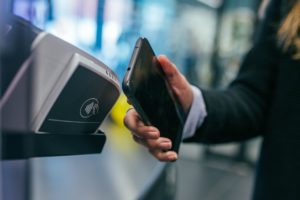
Guest Author Riaz Syed is the CEO and Founder of Infinant.
Typically, banks prefer predictable and stable customers. And yet, due to the sporadic nature of gig workers’ income, they don’t make for safe and reliable customers in the eyes of the bank. But with gig economy workers bringing in £20 billion each year in the UK alone and with the number of gig workers in Europe expected to reach 43 million by 2025, this viewpoint has started to change.
The gig economy refers to the market primarily consisting of temporary, contract or freelance workers. In other words, they’re integral members of a profitable economy since millions of entrepreneurs and businesses rely on part-time workers.
The main reason why there are more gig workers is that since the first wave of COVID-19 wiped out about six million jobs in the European Union, unemployment rates have been skyrocketing and parents have needed to prioritize childcare. Therefore, a significant section of the population was searching for flexible jobs — and here saw a considerable rise in the gig economy.
However, the new influx of gig workers highlighted the existing gig economy issues of high cross-border payments, slow payments and limited access to banking products and services. And without gig-specific help from financial institutions, entrepreneurs, startups and gig workers will struggle to grow in the current economy.
So, how can the banking industry use open banking to address its neglect of the gig economy? And what essential products and services do gig workers need?
Open banking: External collaboration is the golden ticket
The open banking paradigm drives embedded finance as a first step for many banks. Through the power of application programming interfaces (APIs)–coupled with an embedded finance platform that enables intelligent API orchestration–banking can be composable to allow individual financial products, payments, and fintech features to be embedded into bank or brand applications. This shift towards collaboration and a banking ecosystem enables banks to leverage the technical capabilities of embedded finance platforms that expose financial APIs, so the bank can focus on bringing products to market through diligent program management.
Banks face several limitations regarding product innovation, most related to legacy banking systems. Most legacy cores are not real-time, and transactions don’t become official until the end of the day processing. By using an embedded finance platform, banks can run accounts above the core through a virtual ledger, increasing speed to market without the need to invest vast sums of money into core modernizations projects. Hence, all these advantages make building embedded finance products economically viable for banks.
Through this partnership, banks can subscribe to their own tech stack allowing them to use the platform’s technology to design products and services of their choosing, like gig-specific bundles, that may include payroll accounts with earned wages, micro-loans, and insurance. Banks can create bundles specific to gig-industry verticals such as transportation services, like Uber, or asset-sharing services, like Airbnb.
As banks partner with gig platforms, they can embed these products and bundles into their platform, making them more desirable employers to gig workers and creating new customers and core deposits.
Essential tools needed by gig workers
Financial management tools
When workers don’t receive routine income, tracking spending and sticking to budgets is much more challenging. One way for banks to cater to the specific needs of gig workers is by providing financial management tools.
For example, Moves Financial has created a gig-specific bank account with no fee or minimum balance and can track earnings and expenses from over 20 gig platforms. Another app, such as Para, is ideal for drivers within the gig industry with automatic integration with gig platforms like Uber, Grubhub, and Lyft, allowing drivers to compare earnings and mileage across gig platforms helping them to them make better work decisions.
Moreover, since many gig workers are considered self-employed, this doesn’t make them eligible for health care which is a frequent benefit of full-time permanent employment. Yet, with apps like Starship, gig workers can save specifically for health care expenses for themselves and their families, with their investment earning interest tax-free. These financial tools can assist entrepreneurs and gig workers in keeping track of their contracts and payments, giving them greater control of their work and financial health.
Payment integration
A report from Wonolo found that 55% of gig workers surveyed live paycheck to paycheck. Therefore, real-time payments are crucial for gig workers to accelerate capturing their income.
To overcome this frequent bugbear, banks can enable instant and secure transactions, and request to pay by integrating payment APIs into gig platforms.
Another positive of providing payment integration is that it can increase bank processing time and reduce exchange rate volatility — essential for gig workers based in a different country than their employer.
For example, before 2016, Uber drivers had to wait up to one week for payouts. However, Uber’s partnership with Mastercard Send and Green Dot, a fintech and bank holding company, allowed real-time payments to debit card holders and caused up to 100,000 Uber drivers to sign up with Green Dot.
Tailored loans
A recent survey from Rollee discovered that seven out of ten gig workers had been denied access to basic financial products, like loans, and 57% had to apply to more than three lenders before accessing a loan or credit card.
These cash advances can help gig workers improve their day-to-day life and business prospects. For instance, small loans could cover car repairs, equipment purchases, and additional workspaces.
By partnering with gig platforms, banks can also gain data insights and trends of gig workers, allowing the banks to create unique and gig-specific customer loans to a broader spectrum of gig workers who would have previously not qualified since work records would have been spread across various platforms.
Wrapping up
Through the power of open banking, banks can partner with embedded finance platforms, to serve a growing and previously marginalized area of the economy. By accessing previously unavailable customer data, banks will no longer view gig workers as risky customers with unstable incomes. Banks can improve gig workers’ daily lives and support business opportunities while opening themselves to another strong income stream.






